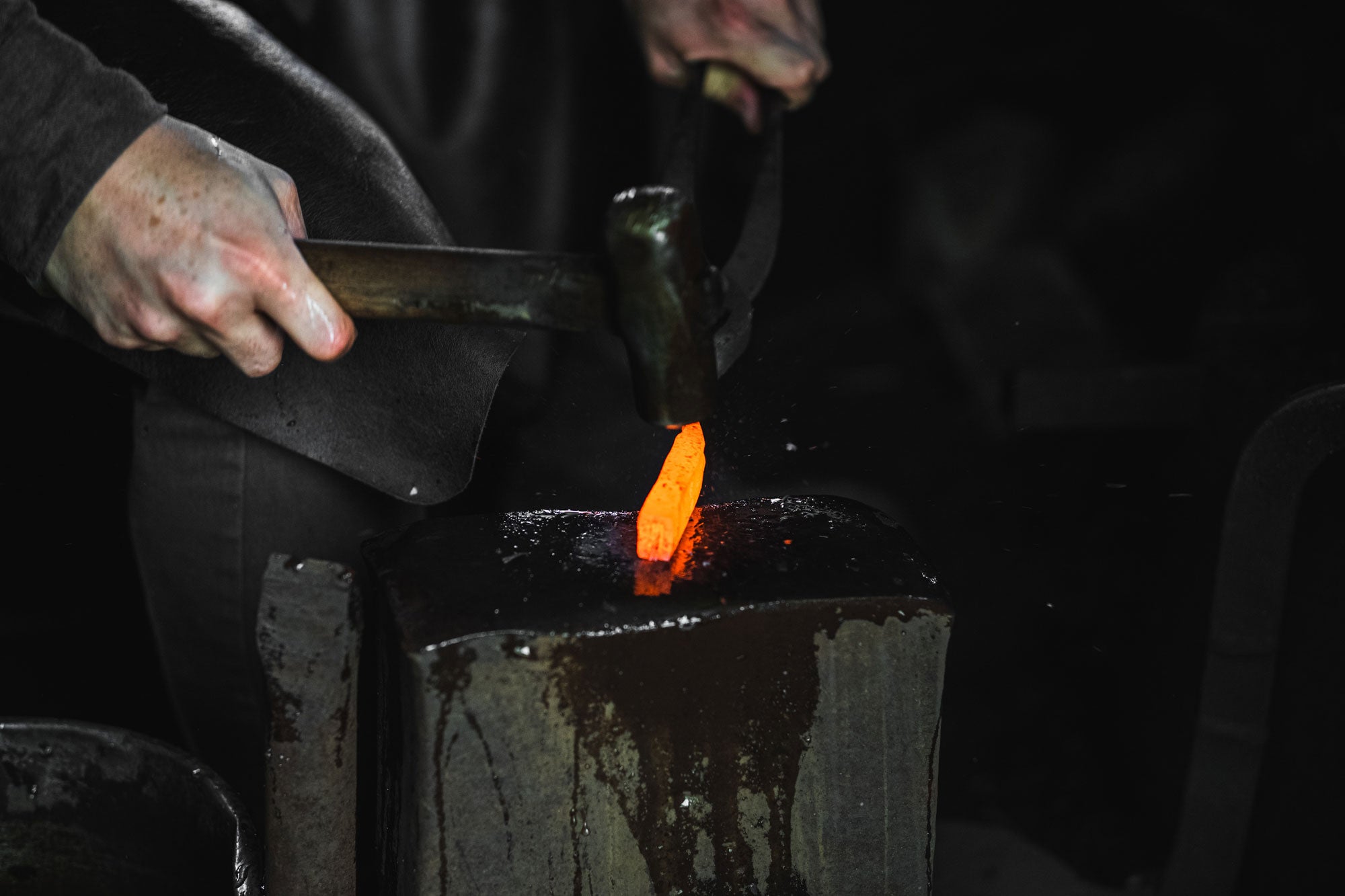
How to Make a Japanese Knife
How to Make a Japanese Knife
Many people have a deep and entirely justifiable fascination with Japanese knives. Sharpness is part of the intrigue: learn more about the history of tameshigiri, if you want proof of the power of these blades.
There's also a fascinating background of how Japanese knives are made. A certain part of the forging process can only be performed after dark so that the blacksmith can better judge what color the metal is glowing — you've got to admit that's unique.
But aside from intrigue, people love the quality of these knives, thanks to how they're made. Here, we look at the process that Japanese knives are put through to obtain that incredible quality. Let's start with a breakdown of how they differ from Western knives.
What's the Difference Between Japanese Knives and Western Knives?
There are a few major differences between many Japanese knives and Western knives:
- Single bevel (Japanese) vs. double bevel (Western): the single bevel means that a blade is better suited to one hand than the other and can hold a sharper edge for more delicate cuts
- Harder, more brittle steel: Japanese knives tend to be made of harder steel. This is more brittle but holds an edge for longer if treated with respect.
- Single-piece vs. composite handle: Western knives tend to have a handle made of two pieces of wood riveted together around the tang. In Japan, the tang is traditionally knocked into a single block of wood.
So, it's clear Western and Japanese knives are very different, but how are these blades made? There are numerous production modes, but we'll just look at two: the high-quality factory method and the mysterious, romantic hand-forged method.
How to Make a Japanese Knife in the Factory
Rest assured that this isn't your typical ‘factory-made’ knife. There may be a team of workers and machinery, but the care that goes into forging these knives is still exquisite. It starts, of course, with the metal.
Step 1: Initial Shaping
Blanks of metal are heated in a forge and then pounded out with a power hammer. The metal is then periodically quenched to give it strength. This process leads to the blades taking on their basic form and achieve uniform strength in all parts.
At the end of the shaping, the blades are treated on a sanding belt. The shape of the blades is controlled and carefully monitored by expert craftspeople. As mentioned, this isn't your typical factory.
Step 2: The Kiln
The knives are put into a kiln and then cooled at a controlled pace a day after the initial shaping. The heating and cooling changes the metal's molecular structure to something approaching the desired result — but not quite. There's more work to be done on day 3.
Step 3: The Finished Shape
As the knives aren't yet at the final hardness, the final stage is to make some cold adjustments. This is an intensive, meticulous process done by hand. The knives are given their desired shape and then put through the kiln one more time, which gives them the perfect hardness.
Step 4: Sharpening
Sharpening a knife is a specialized job. The blades are sent to experts who sharpen the blades to an unbelievably fine grade. Even here, the temperature is key: the wheels that sharpen the blades are kept cool with water, as raising the metal to high temperatures would compromise its quality.
The knives produced using this method are sharper and of better quality than what you'll find in many restaurants. Here's what you wanted, though: the handmade method.
How to Make a Japanese Knife by Hand
Step 1: The Furnace
Masters in forging Japanese knives also start by heating metal in a furnace. So far, so familiar. Just like a great chef knows when a steak is perfectly medium-rare by touch, a master blacksmith knows when the metal is hot enough by its color, as well as other signals that the untrained eye just won't notice.
The metal is shaped with an air hammer and the watchful eye of the blacksmith. Precision is the key to perfection here, and not a single blow is wasted.
Step 2: Cold Forging
‘Cold forging’ means that the metal is, well, almost cold. This makes it far harder to work with than hot metal but yields far superior results. If you don't know what you're doing, it's easy to damage the metal by cold forging.
The blacksmith cold forges the knife to make the metal stronger on a molecular level than if it was hot forged. This job is sometimes given to a master craftsman's apprentice, which can seem an odd term for someone who already understands metalworking better than most mortals.
Step 3: Quenching
The blade is heated and then quenched to bring it to a desired level of hardness. Such is the need for perfection that it's important to use the right fuel for the furnace.
Coal, for example, contains a lot of impurities that make it unsuitable for this refined process. Think of your dad's bourbon-soaked hickory wood chips for his beloved barbecue, but on a whole different level.
The blacksmith knows instinctively what color the metal's glow has to be. This is why quenching only takes place after dark.
Step 4: Tempering
The blade must then be tempered to achieve the final, desired hardness. This takes place in carefully controlled temperature conditions and is essential before the blade can be sent off for sharpening.
Step 5: Creating a Legendary Edge
A top-quality, hand-forged knife deserves no less than the best to put an edge on it. A master knife sharpener is known as a togishi. This person's job is to put an edge on the blade that matches the quality of its construction.
A Labor of Love
Japanese knives are works of art in their own right. The care and years of training that go into producing a quality knife are formidable, and this is true of specialized factories and hand-crafted knives.
If you're interested in Japanese knives, something you might want to put on your bucket list is taking a tour of a workshop. Japanese knives also make wonderful gifts, as each one has a story behind it. Let your fascination take you further into this amazing world: ask any ‘apprentice.’ There's always more to learn!
